-
 bitcoin
bitcoin $109667.069529 USD
-3.03% -
 ethereum
ethereum $3936.685804 USD
-4.07% -
 tether
tether $1.000493 USD
0.01% -
 xrp
xrp $2.771823 USD
-4.74% -
 bnb
bnb $957.805027 USD
-5.34% -
 solana
solana $196.735100 USD
-6.68% -
 usd-coin
usd-coin $0.999727 USD
-0.01% -
 dogecoin
dogecoin $0.227355 USD
-5.12% -
 tron
tron $0.335205 USD
-0.81% -
 cardano
cardano $0.779256 USD
-3.59% -
 ethena-usde
ethena-usde $0.999900 USD
-0.06% -
 hyperliquid
hyperliquid $42.492095 USD
-6.61% -
 chainlink
chainlink $20.501853 USD
-4.34% -
 avalanche
avalanche $28.952606 USD
-11.21% -
 stellar
stellar $0.356038 USD
-3.93%
Why do most miners choose to join a mining pool?
Joining a mining pool increases reward probability, reduces earnings variance, and provides access to advanced tech, making it easier for new miners to enter the industry.
Apr 10, 2025 at 10:50 am
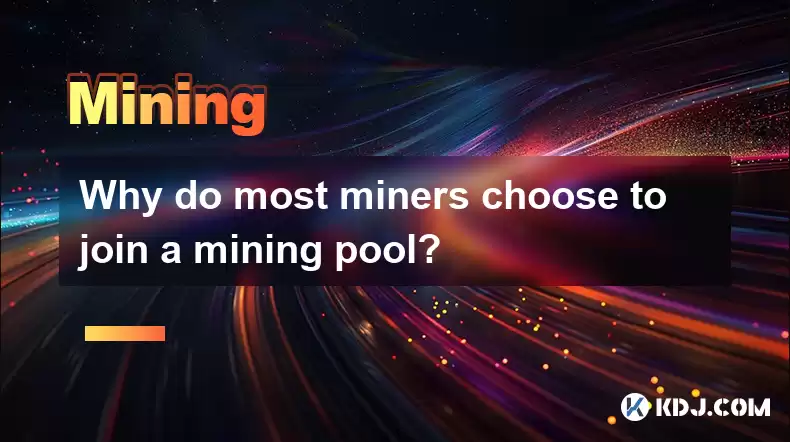
Introduction to Mining Pools
In the world of cryptocurrency, mining is a critical process that involves solving complex mathematical problems to validate transactions and add them to the blockchain. Miners are rewarded with cryptocurrency for their efforts, but the process can be highly competitive and resource-intensive. To increase their chances of earning rewards, most miners choose to join a mining pool. A mining pool is a group of miners who combine their computational resources to mine blocks more efficiently and share the rewards proportionally based on their contributed computing power.
Increased Probability of Earning Rewards
One of the primary reasons miners join a mining pool is the increased probability of earning rewards. When mining solo, the chances of successfully mining a block are relatively low, especially as the difficulty of mining increases with the growth of the network. By joining a mining pool, miners can contribute their hash power to a collective effort, which significantly increases the likelihood of solving the cryptographic puzzle and earning a block reward. The rewards are then distributed among the pool members, ensuring a more consistent income stream.
Reduced Variance in Earnings
Another significant advantage of joining a mining pool is the reduced variance in earnings. Solo mining can be a high-risk, high-reward endeavor, where miners might go weeks or even months without earning any rewards, only to suddenly receive a large payout if they successfully mine a block. In contrast, mining pools offer a more predictable income, as the rewards are distributed more frequently and in smaller amounts. This stability can be crucial for miners who rely on mining as a primary source of income and need to manage their cash flow effectively.
Access to Advanced Mining Technology and Expertise
Joining a mining pool often provides miners with access to advanced mining technology and expertise. Many mining pools are operated by experienced professionals who have optimized their operations for maximum efficiency. By participating in a pool, miners can benefit from the use of sophisticated mining software, hardware, and strategies that might be out of reach for individual miners. This access to advanced technology and expertise can significantly enhance a miner's overall performance and profitability.
Lower Entry Barriers for New Miners
For new miners, joining a mining pool can significantly lower the entry barriers into the cryptocurrency mining industry. The initial investment required to set up a competitive solo mining operation can be prohibitively high, involving the purchase of specialized hardware like ASICs (Application-Specific Integrated Circuits) and the costs associated with electricity and cooling. By joining a mining pool, new miners can start with less powerful equipment and still contribute to the mining process, gradually scaling up their operations as they gain experience and resources.
Enhanced Security and Reliability
Participating in a mining pool can also offer enhanced security and reliability. Solo miners are often more vulnerable to attacks, such as 51% attacks, where a malicious actor gains control of the majority of the network's mining power. Mining pools, on the other hand, can implement robust security measures and protocols to protect their members. Additionally, pools can offer more reliable uptime and maintenance services, ensuring that miners can continue to operate effectively without interruptions.
The Role of Pool Fees and Payout Structures
While joining a mining pool offers numerous benefits, it's essential for miners to consider pool fees and payout structures. Most mining pools charge a fee, typically a percentage of the rewards earned, to cover operational costs and maintain the pool's infrastructure. Miners should carefully evaluate the fee structure and compare it across different pools to ensure they are getting the best value for their investment. Additionally, pools may offer different payout methods, such as Pay Per Share (PPS), Proportional, or Score-based, each with its own advantages and considerations. Understanding these factors can help miners choose the most suitable pool for their needs.
Community and Support Networks
Finally, joining a mining pool often means becoming part of a larger community and support network. Many mining pools have active forums, chat rooms, and social media groups where miners can share tips, troubleshoot issues, and stay updated on the latest developments in the cryptocurrency space. This sense of community can be invaluable, especially for new miners who may need guidance and support as they navigate the complexities of mining.
Frequently Asked Questions
Q: Can I switch between mining pools easily?A: Yes, miners can typically switch between mining pools relatively easily. Most mining software allows you to change the pool address and other settings without significant downtime. However, it's important to consider any potential impact on your mining rewards and to ensure that you have settled any outstanding balances with your current pool before switching.
Q: Are there any risks associated with joining a mining pool?A: While joining a mining pool can offer many benefits, there are some risks to be aware of. These include the potential for pool operators to engage in dishonest practices, such as withholding rewards or manipulating the payout structure. Additionally, if a pool becomes too large, it may pose a centralization risk to the network. Miners should research and choose reputable pools to mitigate these risks.
Q: How do I choose the best mining pool for my needs?A: Choosing the best mining pool involves considering several factors, including the pool's fee structure, payout method, reliability, and the size of the pool. It's also important to look at the pool's reputation and the level of community support it offers. Comparing these factors across multiple pools can help you find the one that best aligns with your mining goals and resources.
Q: Can I mine different cryptocurrencies within the same mining pool?A: Some mining pools support mining multiple cryptocurrencies, but this depends on the specific pool and the type of mining hardware you are using. Pools that support multiple cryptocurrencies often have separate sections or sub-pools for each coin. It's important to check the pool's documentation to see if it supports the cryptocurrencies you are interested in mining.
Disclaimer:info@kdj.com
The information provided is not trading advice. kdj.com does not assume any responsibility for any investments made based on the information provided in this article. Cryptocurrencies are highly volatile and it is highly recommended that you invest with caution after thorough research!
If you believe that the content used on this website infringes your copyright, please contact us immediately (info@kdj.com) and we will delete it promptly.
- AlphaTON's Bold Bet: Toncoin, Balance Sheets, and the Future of Digital Treasuries
- 2025-09-27 04:45:15
- Crypto Kidnapping in Minnesota: A New York Minute Breakdown of the $8 Million Heist
- 2025-09-27 04:25:14
- Avalanche, RUVI, and the Altcoin Rush: What's Fueling the Fire?
- 2025-09-27 04:25:14
- Ripple's RLUSD Takes Center Stage: Bybit Listing and Derivatives Market Potential
- 2025-09-27 05:05:12
- Bitcoin, Ethereum, and ETF Outflows: What's Shakin' in Crypto?
- 2025-09-27 05:25:13
- Worldcoin's WLD: Support Rebound or Further Decline? A New Yorker's Take
- 2025-09-27 05:05:12
Related knowledge
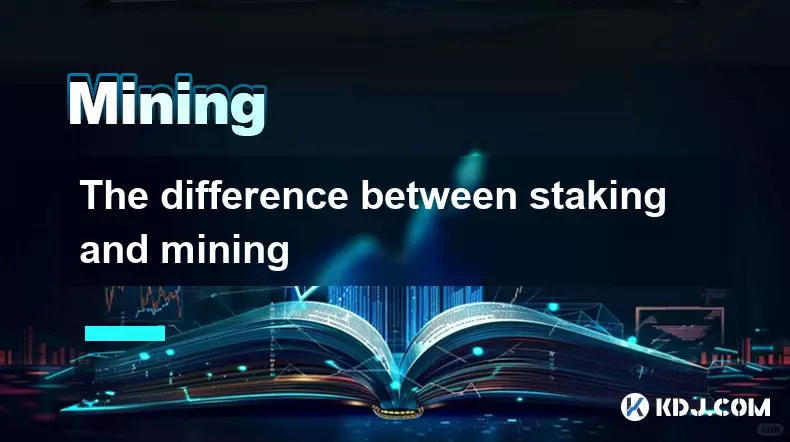
The difference between staking and mining
Sep 24,2025 at 05:18am
Understanding Staking in the Cryptocurrency Ecosystem1. Staking involves holding funds in a cryptocurrency wallet to support the operations of a block...
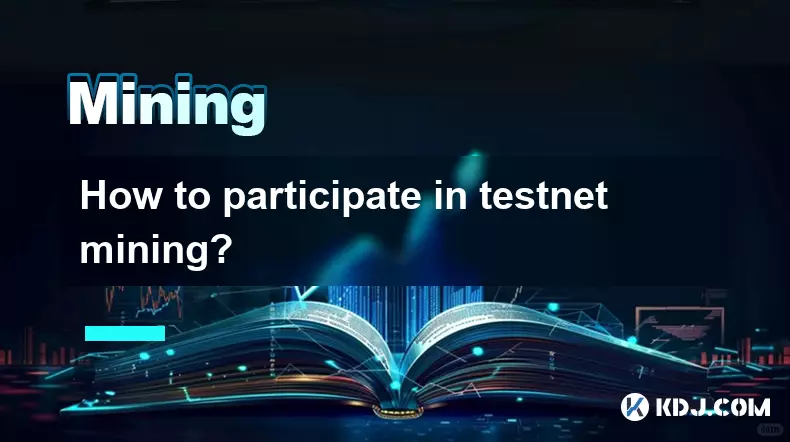
How to participate in testnet mining?
Sep 22,2025 at 09:18am
Understanding Testnet Mining in the Crypto Ecosystem1. Testnet mining is a method used by blockchain developers to simulate real-world conditions on a...

How to dispose of abandoned mining machines?
Sep 19,2025 at 08:19pm
Assessing the Condition of Abandoned Mining Rigs1. Begin by inspecting each mining machine for visible damage, corrosion, or missing components. Machi...

How to identify high-quality mining pools?
Sep 21,2025 at 03:19pm
Reputation and Track Record1. A mining pool’s reputation is built over time through consistent performance and transparency. Pools that have operated ...
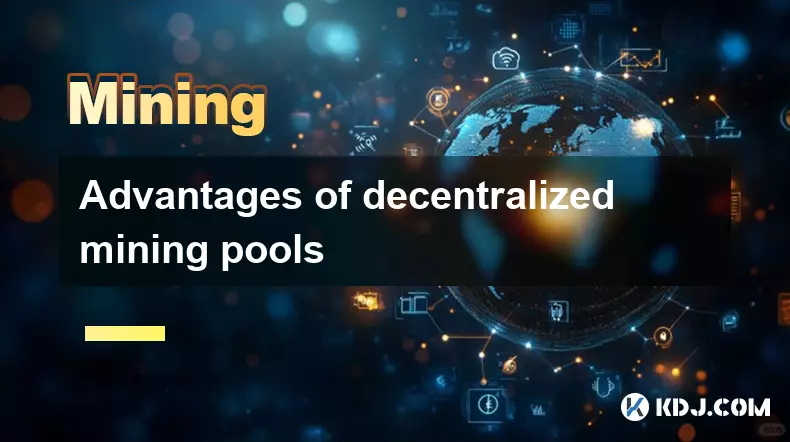
Advantages of decentralized mining pools
Sep 20,2025 at 04:36pm
Enhanced Security and Resistance to Censorship1. Decentralized mining pools operate on blockchain-based smart contracts, eliminating the need for a ce...
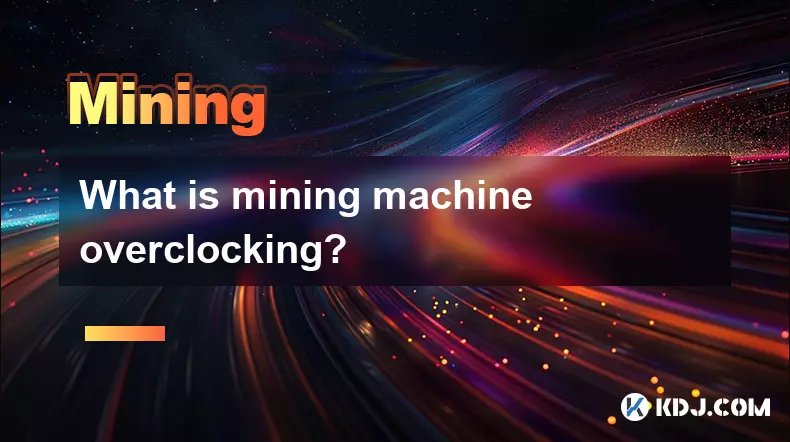
What is mining machine overclocking?
Sep 21,2025 at 07:19pm
Understanding Mining Machine Overclocking1. Mining machine overclocking refers to the process of increasing the operating frequency of a cryptocurrenc...

The difference between staking and mining
Sep 24,2025 at 05:18am
Understanding Staking in the Cryptocurrency Ecosystem1. Staking involves holding funds in a cryptocurrency wallet to support the operations of a block...

How to participate in testnet mining?
Sep 22,2025 at 09:18am
Understanding Testnet Mining in the Crypto Ecosystem1. Testnet mining is a method used by blockchain developers to simulate real-world conditions on a...

How to dispose of abandoned mining machines?
Sep 19,2025 at 08:19pm
Assessing the Condition of Abandoned Mining Rigs1. Begin by inspecting each mining machine for visible damage, corrosion, or missing components. Machi...

How to identify high-quality mining pools?
Sep 21,2025 at 03:19pm
Reputation and Track Record1. A mining pool’s reputation is built over time through consistent performance and transparency. Pools that have operated ...

Advantages of decentralized mining pools
Sep 20,2025 at 04:36pm
Enhanced Security and Resistance to Censorship1. Decentralized mining pools operate on blockchain-based smart contracts, eliminating the need for a ce...

What is mining machine overclocking?
Sep 21,2025 at 07:19pm
Understanding Mining Machine Overclocking1. Mining machine overclocking refers to the process of increasing the operating frequency of a cryptocurrenc...
See all articles










































































